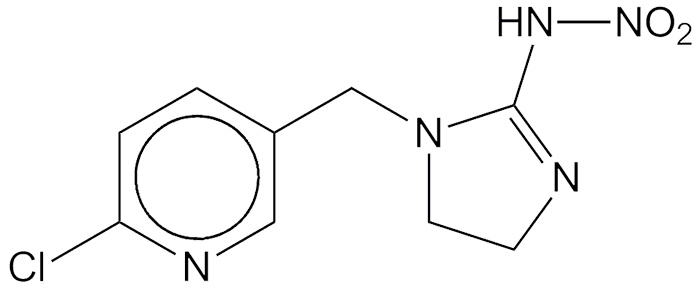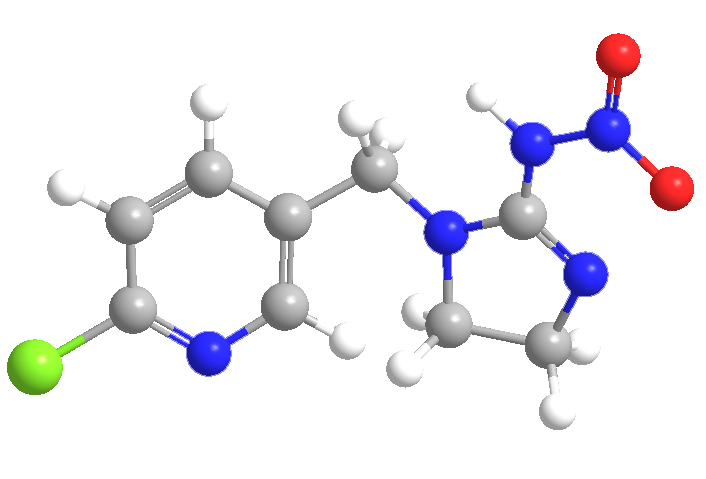

Neonicotinoid insecticides were considered safe when they were introduced because their toxicity to mammals is far lower than it is to insects. These compounds act on the central nervous system of insects. Imidacloprid is not only the leading neonicotinoid, but it is the world’s most widely used insecticide. The US Environmental Protection Agency granted the first imidacloprid registration to Miles Laboratories (now Bayer CropScience) in 1994 for use on turfgrass and ornamentals.
In recent years, the declining population of honeybees and other beneficial insects in the United States and Europe has been attributed to the widespread use of imidacloprid. The EPA and other authorities have restricted the use of imidacloprid and other neonicotinoids in areas where bees are known to be active.
Imidacloprid may present another threat. A study by C. A. Hallmann and co-workers at Radboud University in the Netherlands found that neonicotinoids may be indirectly responsible for the decline in populations of insect-eating birds. The declines began when imidacloprid was introduced in the 1990s.
MOTW update: December 24, 2018
Imidacloprid was the Molecule of the Week for August 25, 2014. At the time, it was the most widely used insecticide in the world. But the US Environmental Protection Agency and its European counterparts attributed severely declining honeybee populations to the use of imidacloprid and other neonicotinoid insecticides. Now, in an unusual twist, British researchers report that another insecticide, fipronil, which is not a neonicotinoid, is the culprit behind honeybee dieoff. A key finding is that bees accumulate fipronil in their bodies but rapidly eliminate imidacloprid. How regulators will react to this discovery remains to be seen.
MOTW update:
May 14, 2018
Clothianidin, imidacloprid, and thiamethoxam were the Molecules of the Week for February 17, 2014, August 25, 2014, and October 15, 2012, respectively. All three are neonicotinoid pesticides, and all three have been found to contribute to the worldwide die-off of honeybees. Use of these pesticides has been gradually restricted during the past several years, but now the European Union is about to ban them from all outdoor uses. Will the United States follow suit?
MOTW update:
March 14, 2022
Imidacloprid1 is a neonicotinoid pesticide that has come under regulatory pressure because of its neurotoxic risk to honeybees.
In 2020, the US Environmental Protection Agency unexpectedly announced that it was allowing the continued use of neonicotinoids, including imidacloprid. But the pressure to restrict them continues. Last month, the California Department of Pesticide Regulations (DPR) announced it will ban the use of neonicotinoids on flowering crops when they are in bloom. DPR estimates that this will reduce neonicotinoid use by ≈45% in California.
1. CAS Reg. No. 138261-41-3.
MOTW update:
February 17, 2020
Imidacloprid is a nicotinoid pesticide that pose neurotoxic risks to humans and wildlife, especially honeybees. Nonetheless, in an interim decision announced in January, the US Environmental Protection Agency is allowing continued use of the pesticides, with some restrictions yet to be announced. This action is in contrast to the European Commission’s 2018 ban on these and other nicotinoids for outdoor use.

Learn more about this molecule from CAS, the most authoritative and comprehensive source for chemical information.
Molecule of the Week needs your suggestions!
If your favorite molecule is not in our archive, please send us a message. The molecule can be notable for its current or historical importance or for any quirky reason. Thank you!
Stay Ahead of the Chemistry Curve
Learn how ACS can help you stay ahead in the world of chemistry.

